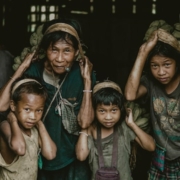Filipino children risk death to dive and dig for gold
By Deborah Andrews, CLC Contributing Writer
 In September 2015, Human Rights Watch released a report, “Phillipines: Children Risk Death to Dig and dive for Gold,” exposing the desperate working conditions of many of those involved in the Filipino gold mining industry. It is a worthy, informative and thought provoking read. In 2014, the Philippines produced 18 tons of gold. HRW researchers discovered that an estimated 70-80% came from small-scale mines, financed by local businessmen and operated without any basic machinery. These mines are worked by 200,000-300,000 people — many of them children aged 11-17, but some as young as 9 years old.
In September 2015, Human Rights Watch released a report, “Phillipines: Children Risk Death to Dig and dive for Gold,” exposing the desperate working conditions of many of those involved in the Filipino gold mining industry. It is a worthy, informative and thought provoking read. In 2014, the Philippines produced 18 tons of gold. HRW researchers discovered that an estimated 70-80% came from small-scale mines, financed by local businessmen and operated without any basic machinery. These mines are worked by 200,000-300,000 people — many of them children aged 11-17, but some as young as 9 years old.
Most gold in the Philippines is underwater. To mine it, workers dive into narrow shafts often ten yards deep and only two feet wide. Using oxygen tubes to breathe, operated by a diesel compressor at the surface, workers can stay mining under water for 1-2 hours at a time. This is hazardous work. HRW researchers found that compressors frequently break due to mudslides; workers get extremely cold underwater; the diesel compressors can cause carbon monoxide poisoning; and a bacterium in the water causes a skin disease known as Romborombo that leaves skin irritated and infected.
Dry shafts can be 25 yards deep and have oxygen pumped into them by an air blower. Workers often work up to 24-hour shifts with only a short break above ground. There are frequent accidents. In 2014, two brothers suffocated, but the practice continues.
Disturbingly, HRW report authors discovered that mercury is widely used to process the gold. Mercury is a powerful neurotoxin, causing muscle spasms, brain damage, permanent disability, and even death. It is particularly harmful to children’s developing nervous systems. This unrestricted mercury use is now also contaminating the fish population, a vital food source – further endangering the people.




